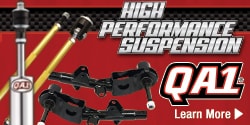70Duster340
Well-Known Member
My Duster was purchased from the other owner with fiberglass fenders. It had an in-dash radio/cassette player which never worked. Knowing that the AAR Cuda and Challenger T/A came with fiberglass hoods and the antenna was relocated to the rear quarter panel, is this what I need to do to get a new radio to function? Or since the hood is metal, will the antenna work in the original location as long as it is properly grounded?
Thanks
Thanks
















